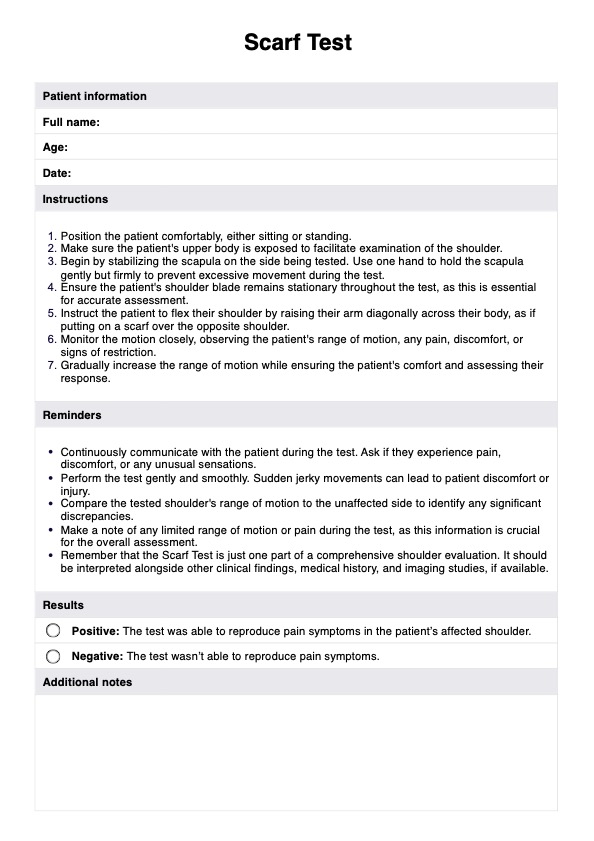Ask your patient to place one arm across their chest. Then, apply pressure to their elbow and ask them to resist. Pain or discomfort during the test may indicate a shoulder injury.

Scarf Test
Evaluate a patient's shoulder range of motion and check for possible impingement using the Scarf Test.
Use Template
Scarf Test Template
Commonly asked questions
The Scarf Test measures shoulder joint strength and stability, assessing issues like rotator cuff tears, impingement, tendinitis, and instability.
The Scarf Test reliably indicates shoulder injuries used in clinical research studies. However, it's not a standalone diagnostic tool and should be part of a complete evaluation by a medical professional.
EHR and practice management software
Get started for free
*No credit card required
Free
$0/usd
Unlimited clients
Telehealth
1GB of storage
Client portal text
Automated billing and online payments











